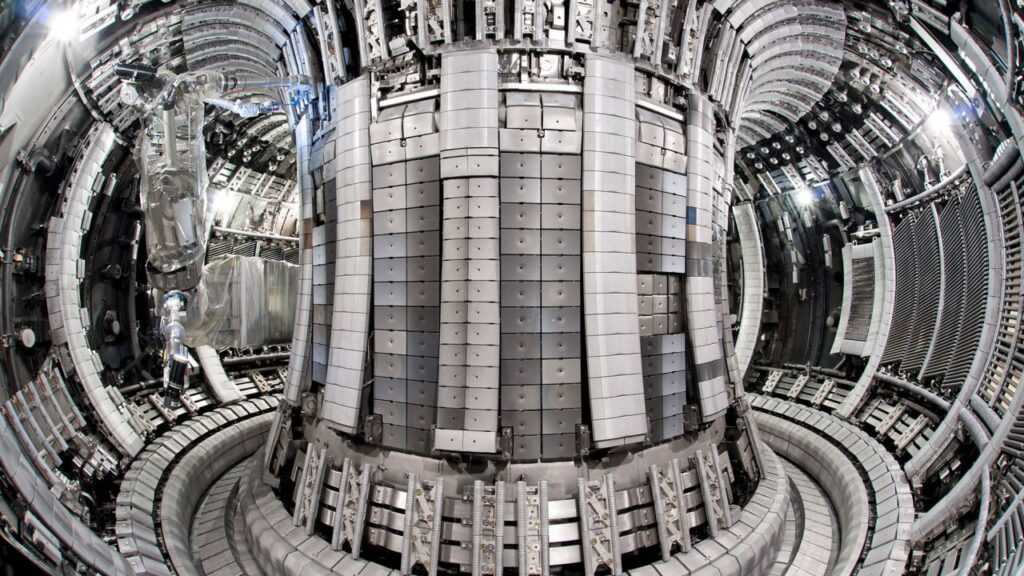The core of a JET tokamak that produces nuclear fusion reactions in the UK. Photo c. Christopher Roux, CEA-IRFM, EUROfusion.
The US Department of Energy has just announced that scientists have for the first time produced a successful nuclear fusion reaction resulting in a net energy gain. This reaction was previously possible for uncontrolled hydrogen bombs, but this is the first time experiments have been able to control the reaction and contain the energy produced, which opens the door for nuclear fusion to be used as a potential clean energy source in the future.
For decades, scientists have sought ways to unleash the potential of nuclear energy using something called the strong force that fuses atoms at very close distances. In order to get the nuclei of atoms close enough to activate that force, extremely high temperatures are needed to push the atoms close enough together to make use of this force, which appears to be one of the fundamental forces of nature. This force replicates the fusion that powers stars like our sun, by smashing together atoms at high temperatures and speeds in order to release light and heat.
Scientists at the National Ignition Facility at the Lawrence Livermore National Laboratory in California made this technology finally work. They fired 192 laser beams at a target, creating x-rays. The radiation imploded a diamond capsule filled with two isotopes of hydrogen, deuterium and tritium, which released energy. Under discussion is the enormous amount of power required to fire those lasers, but future improvements in efficiencies in this technology could make this energy production method much more stable and energy efficient, and the important discovery was that the reaction released more energy than was input by the power of the lasers, indicating this is a genuine power source.
The key issue besides attaining such high required levels of heat and energy to fuse atoms is that once nuclear fusion is achieved, it will vaporize any container that it comes in contact with. In order to contain and manage such high amounts of energy produced through thermonuclear reactions, a type of magnetic containment field needs to be utilized to hold the energy that results from fusion reactions.
U.S. Energy Secretary Jennifer Granholm made an announcement Tuesday on the results of this successful experiment to contain nuclear fusion reactions. This announcement coming from the U.S. Department of Energy indicates that the U.S. government sees nuclear fusion as a potential viable power source for clean energy that could revolutionize the grid and technology and how we power a clean energy future.
The experiment needs to be duplicated at longer intervals, and more research must happen to successfully manage nuclear fusion reactions before this energy source can be utilized for public consumption. Scientists in the UK previously had improved on the previous records for sustaining a reaction of this type, using a donut-shaped machine called a tokamak fitted with magnets to generate a record-breaking amount of energy for five seconds last year. It is the heat sustained by the process of fusing atoms together that helps produce energy from nuclear fusion.
Fusion takes hydrogen atoms, the lightest atoms found in nature, and fuses them to create helium and neutrons, which are lighter in mass than the original substance, indicating that mass has been converted to energy. In the case of this most recent discovery, scientists found that nuclear fusion could produce 50% more energy in output than was put in, without any carbon emissions or pollution being created. This has the potential to create massive energy out of renewable resources, but requires high-level technology and containment to turn fusion into an energy production method usable for a global power source.

